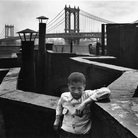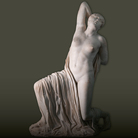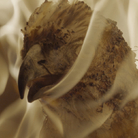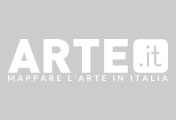Silvia Levenson. Identitad desaparecida

Dal 12 March 2016 al 11 September 2016
Venezia
Luogo: Museo del Vetro
Indirizzo: Fondamenta Giustinian 8, Murano
Orari: 10-17. Dal 1 aprile 10-18
Curatori: Elena Povellato
Costo del biglietto: intero € 10, ridotto € 7.50. Gratuito residenti e nati nel Comune di Venezia; bambini da 0 a 5 anni; portatori di handicap con accompagnatore; guide autorizzate e interpreti turistici che accompagnino gruppi o visitatori individuali; per ogni gruppo di almeno 15 persone, 1 ingresso gratuito (solo con prenotazione); membri ICOM; volontari Servizio Civile; partner ordinari MUVE; possessori MUVE Friend Card; membri Venice International Foundation
Telefono per informazioni: 848082000
E-Mail info: info@fmcvenezia.it
Sito ufficiale: http://www.museovetro.visitmuve.it
Silvia Levenson, rinomata artista di origini argentine che da anni vive in Italia, si presenta per la prima volta in uno spazio pubblico a Venezia con Identidad desaparecida, una mostra personale il cui titolo allude al vuoto lasciato dalle migliaia di bambini, oggi adulti, strappati alle loro famiglie biologiche in Argentina durante il regime dal 1976 al 1983, quando i militari e i loro complici civili – medici, preti e funzionari – vollero eliminare non soltanto una generazione, ma anche la loro discendenza.
Reduce dall’ottima accoglienza ricevuta a Buenos Aires, Washington, Barcellona, Montevideo, Parigi e Riga, la mostra, realizzata in collaborazione con la Galleria Traghetto Venezia, a cura di Sivia Levenson e Elena Povellato, è dedicata alle Nonne di “Plaza de Mayo” e al loro indomito lavoro per ridare un’identità ai figli di desaparecidos, i loro nipoti, strappati dalla dittatura argentina ai loro genitori naturali e illegalmente dati in adozione.
Negli spazi delle Conterie - recuperati a funzione museale in occasione degli ultimi lavori di restauro del museo – sono esposte dal 12 marzo all’11 settembre sculture, installazioni e fotografie di forte valenza evocativa e impatto emotivo. Si tratta di lavori che, giocando sulle caratteristiche del vetro – usato fuso, oppure a stampo o come materiale industriale - suggeriscono il distacco, ma anche l’analisi oggettiva del tema affrontato, quello dell’identità strappata.
"Anche se i figli dei desaparecidos oggi sono adulti, nel mio lavoro parlo sempre di bambini”, spiega l’artista, “perché è nell’infanzia che il trauma ha avuto origine, quando i militari, sostituendosi agli organi democratici della società argentina, si sono presi il diritto se lasciare in vita o uccidere i genitori negando ogni identità familiare.”
Una vicenda dolorosa, tipicamente argentina, ma anche personale per l’artista, che ha visto molti familiari e conoscenti coinvolti direttamente in questi avvenimenti.
Il vetro, elemento essenziale per contenere e conservare liquidi e alimenti, ma anche per costruire lenti, è l’imprescindibile materia prima del lavoro dell’artista, che nelle sue opere lavora per la conservazione del “corpo della memoria”.
Banali oggetti del quotidiano come seggioline, tappeti, altalene e scarpette sono associati a coltelli di vetro, filo spinato, chiodi, puntine.
Completa la mostra un’installazione site-specific dal forte impatto: centodiciannove vestitini da neonato in vetro fuso colorato ricordano i casi risolti dalle Abuelas de Plaza de Mayo e cioè i centodiciannove figli che hanno potuto conoscere il nome dei loro veri genitori, le circostanze della loro nascita e incontrare la famiglia biologica.
SCARICA IL COMUNICATO IN PDF

-
 Dal 2 December 2025 al 19 February 2026
Milano | Centro Culturale di Milano
Dal 2 December 2025 al 19 February 2026
Milano | Centro Culturale di Milano
Walter Rosenblum. Il mondo e la tenerezza
-
 Dal 30 November 2025 al 12 April 2026
Gallarate | Museo MA*GA
Dal 30 November 2025 al 12 April 2026
Gallarate | Museo MA*GA
Kandinsky e l’Italia
-
 Dal 29 November 2025 al 12 April 2026
Roma | Musei Capitolini
Dal 29 November 2025 al 12 April 2026
Roma | Musei Capitolini
La Grecia a Roma
-
 Dal 22 November 2025 al 3 May 2026
Torino | Sale Chiablese dei Musei Reali
Dal 22 November 2025 al 3 May 2026
Torino | Sale Chiablese dei Musei Reali
Orazio Gentileschi. Un pittore in viaggio
-
 Dal 20 November 2025 al 25 January 2026
Firenze | Palazzo Strozzi
Dal 20 November 2025 al 25 January 2026
Firenze | Palazzo Strozzi
Andro Eradze. Bones of Tomorrow
-
 Dal 21 November 2025 al 28 March 2026
Cuneo | Complesso Monumentale di San Francesco
Dal 21 November 2025 al 28 March 2026
Cuneo | Complesso Monumentale di San Francesco
La Galleria Borghese. Da Raffaello a Bernini. Storia di una collezione


